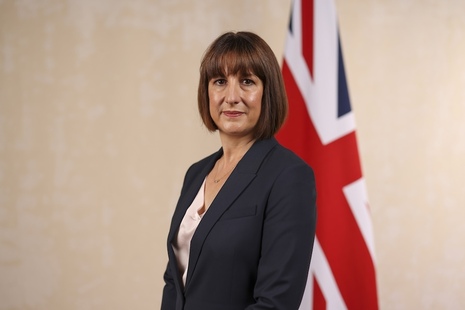
Rachel Reeves Eyes a £2 Billion Pension Tax Raid — What’s Going On?
Chancellor Rachel Reeves is reportedly exploring a major shift in pension taxation that could generate more than £2 billion annually, prompting growing concern and scrutiny.
What Are the Proposed Changes?
Reeves is considering cutting or eliminating the tax-free pension lump sum—the lump-sum amount many can withdraw without tax upon retirement. Such a move could raise over £2 billion per year.
Additionally, the Chancellor has already outlined plans to include unused pension pots in inheritance tax (IHT) calculations—effectively subjecting them to a 40% levy from April 2027 onward. Estimates suggest this move could raise £1.5 billion a year by 2030, while other projections push that figure as high as £2.3 billion by 2029.
Combined with the lump-sum changes, the overall impact could stand in the £3–4 billion annual range—an enormous haul intended to help plug the government’s growing fiscal shortfall.
Why The Government Is Looking There
Labour has promised not to increase mainstream taxes—like income tax, national insurance, or VAT—on working individuals. Still, mounting budget pressures require significant new revenue. With inflation, static tax thresholds, and welfare reversals creating a growing fiscal gap, targeting capital, pension, and inheritance channels becomes increasingly attractive.
By bringing pensions and unused lump sums into the tax net, the Treasury could generate billions more while skirting headline-level tax increases—focusing instead on areas often associated with wealth or deferred benefit.
Who Could Be Hit—and How Much?
Tax-Free Lump Sum Impact
If the tax-free pension lump sum is eliminated or scaled back, retirees who rely on that lump sum for early or lump-sum expenses (e.g., house purchase, business start-up, debt clearing) would see a significant reduction in tax-free capital available at retirement.
Inheritance Tax on Unspent Pension Pots
This change is already confirmed and set to take effect in April 2027. Any unspent pension assets at the time of death will be included in the estate for Inheritance Tax purposes, even if the pension holder passes away before the minimum access age. The IHT rate is typically 40%.
- Example: A single homeowner in England with an average property value—£290,395—and a moderate pension pot of £415,000 would face an estimated IHT bill of £82,1 In contrast, London homeowners might face a staggering £192,254 bill when combining a £565,637 house and the same pension pot.
- Joint ownership eases but doesn’t eliminate the burden. For example, a joint-owner London residence reduces the hypothetical bill to around £129,127.
Critics warn these changes could snare ordinary families—not just the very wealthy—as “fiscal drag” sweeps more estates into the IHT net due to frozen thresholds.
Threat to Family Businesses
New IHT inclusion of pension-held assets may jeopardise roughly 15,000 family-run businesses, according to Evelyn Partners . Many businesses hold illiquid assets—like real estate or machinery—in SIPPs or SSAS. With IHT due within six months of death, families may be forced into “fire sales,” undermining inter-generational succession and risking job losses
Double Taxation & Complexity: Industry Concerns
Wealth managers and tax professionals warn that IHT on pension pots can lead to double taxation. Pension contributions made with taxed income may now face taxation again in the inheritance chain, compounding the complexity of retirement planning
Additional concerns include:
- Administrative delays in releasing pension funds to beneficiaries
- Increased probate complexity and costs
- A negative impact on incentives for saving in pensions for both retirement and estate planning
Entrepreneurs and business owners argue this move penalises wealth creators and disincentivises business investment and innovation
What You Should Do
Here’s how individuals can prepare:
1. Review Your Pension Strategy
Consider how much of your pension pot may remain unspent after retirement. Could drawing slightly more now reduce future inheritance tax burdens? If the tax-free lump sum is changed, timing and allocation of pension withdrawals may become even more critical.
2. Get IHT and Estate Planning Advice
Speak with financial planners about implementing lifetime gifting, trusts, or other estate tools to reduce the potential insurance burden on heirs.
3. Business Owners with Pension-Linked Assets
If running a family business with assets held inside SIPPs or SSAS, urgently review your succession planning. Forced asset liquidation to meet IHT obligations can be avoided with proper forward planning.
4. Stay Informed
Many of these changes—especially the pension lump sum taxation—are not yet final. Stay alert ahead of the Autumn Budget when firm proposals will be laid out.
Final Thoughts
Chancellor Rachel Reeves is weighing significant pension tax reforms—the phasing out of the tax-free lump sum and introducing inheritance tax on unspent pension pots. These moves could raise £1.5–£2.3 billion annually, or more, addressing the mounting fiscal gap without raising headline taxes.
But the potential fallout is substantial. Homeowners, retirees, families, and business owners could bear steep financial burdens, and estate planning has never been more critical.
If you’d like, I can help with a sidebar summarising action items for retirees or create tailored planning checklists—just let me know!

Leave a Reply